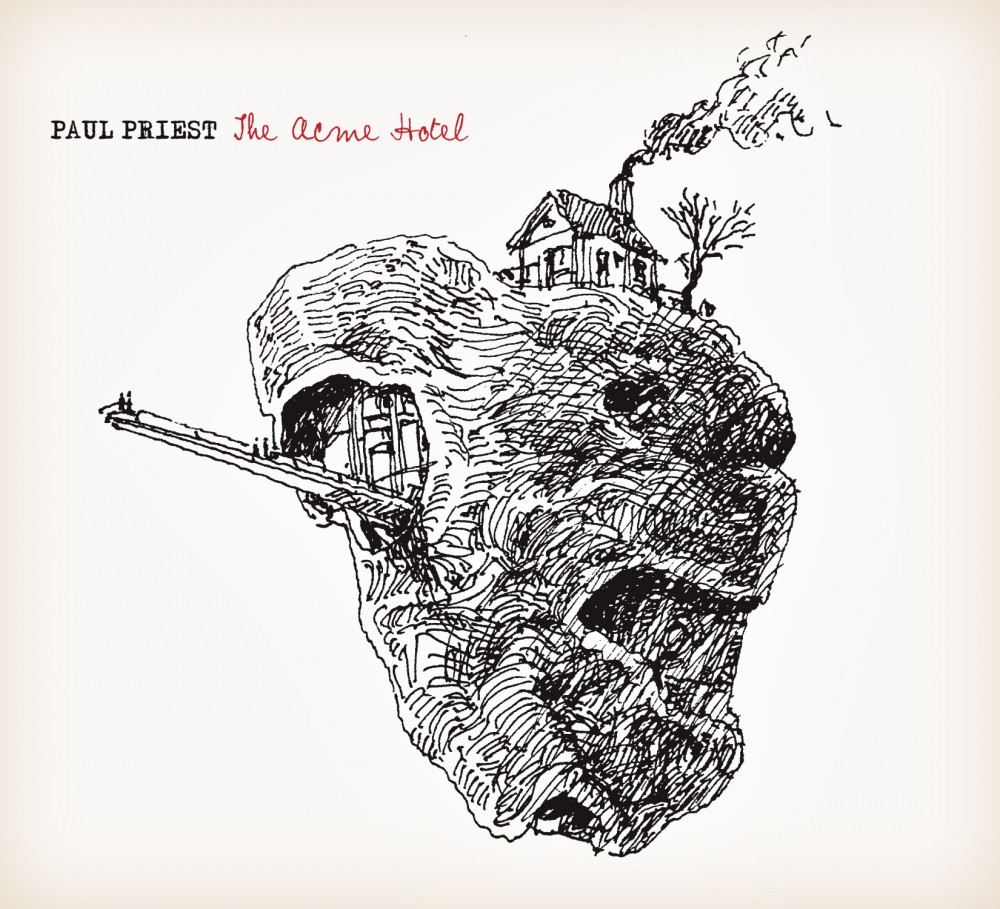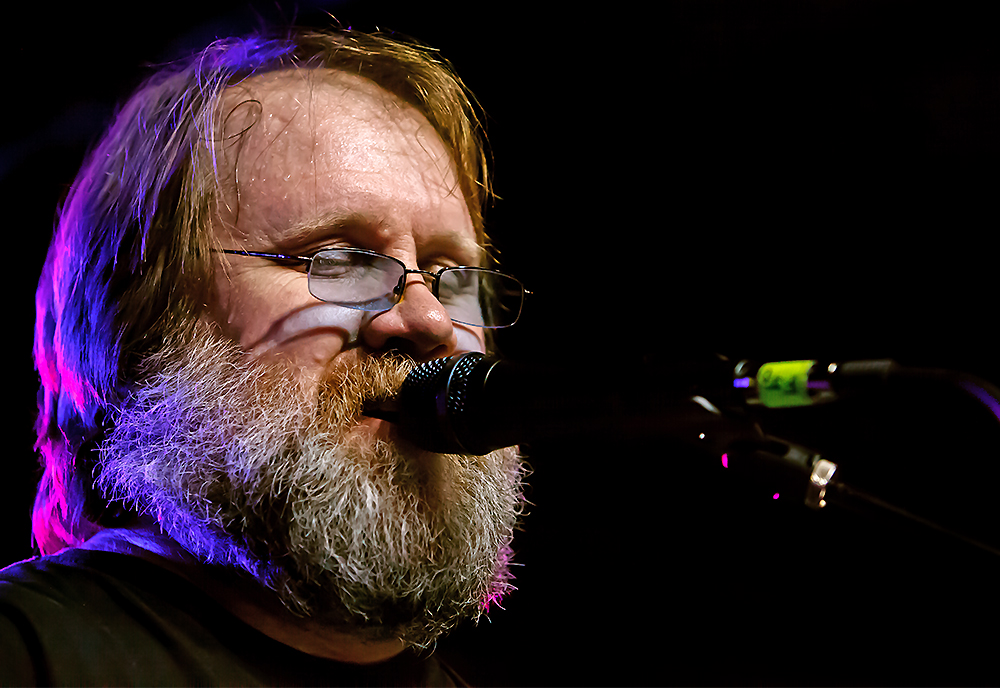By: Dave Weckstein | Photos: Norman Sands

Fans of Old Shoe got a special treat earlier this month with the release of a solo album from the lead guitarist of one of Chicago's foremost jam bands.
Paul Priest sat with me on a sunny June afternoon to talk about what inspired the third solo album of his career, The Acme Hotel. One of the chief reasons Priest decided to record and release the 11 song LP: he had the material, having written the music and lyrics for the majority of the album.
 The professorial Priest explained that Hotel was a vehicle that, in his mind, reflects “how life operates.” The album's back cover displays a neon “VACANCY” sign of an old hotel, prompting him to wax poetically, “we rise into this life, check in, do our thing for a little, and then check out."
The professorial Priest explained that Hotel was a vehicle that, in his mind, reflects “how life operates.” The album's back cover displays a neon “VACANCY” sign of an old hotel, prompting him to wax poetically, “we rise into this life, check in, do our thing for a little, and then check out."
It's not a fatalistic thought, more resolute.
The rest of the set's tracks excellently demonstrate Priest's wish to provide a glimpse into each “room of the hotel,” with collaborative assistance from Azuolas Sinkevicius, who has worked with stars like Smashing Pumpkins and Lady Gaga in recent years.
Like Old Shoe’s live performances, Acme varies in genre and tempo throughout the roughly 35 minute stroll.
“History,” the prologue to his story, has nice call-and-response vocals and guitar, kicking off the record with a fine showcase of Priest's talents, its balanced mix of melancholy and hope setting the tone. It feels like a kind of city-bred Chicagoan sass mixed with a dash of sensitivity. He twists Charles Dickens' iconic intro of A Tale Of Two Cities into "It was the best of times, and worst of, times two." One can ponder ad infinitum at what the subject of such math might be.
“Big Old Sun” follows in a restrained and patient tempo, with thick vocal harmonies and big drum fills, sounding triumphant in contrast.
The futuristic bossa nova infused “23rd Century Elevator Man” is a stylistic departure from the first two tracks and comes off as suprise. The rhythm section and guitar leads share the spotlight on this tune, heavy with fusion undertones.
The fourth track, “Machine on Caffeine,” a heavier blues-influenced grind, barrels hard into high southern rock riffs and sounds mechanical. Priest grew up in Detroit working in auto plants as a technical writer and philosophically offers this as a tune as an homage to car production: machines making machines. He jokes, “maybe one day those machines might enjoy coffee,” perhaps in a machine break room.
“Quiet Young Elf,” a hauntingly dreamy tune, has lyrics penned by J.T. Berg, a creative writer friend of Priest’s. Spacier than the preceding songs, it is one of the first times that Paul has had lyrics written by anyone other than himself.
“City of Detroit Blues” is the guitar solo showcase, with assertive command of licks, tone and dynamics. Closing your eyes and visions of Stevie Ray Vaughan may come to mind.

“Rudyboy” is another ditty with lyrics penned by J.T. Berg. It’s whimsical and rambling and contains a bit more of a bluegrass feel. Fast in tempo and complete with a storytelling style of lyrical content, it reminds me of Old Shoe’s more rootsy incarnation.
“Lindsay Avenue (Life Is But A Dream)” is peaceful and winds like a river before “Time to Run” provides the next stylistic surprise on the album. It presents an interesting use of electronic sounds and studio production on an album that is confidently, up until this point, organic and unproduced.
“The Acme Hotel”, the second to last track, opens bare bones -- just vocals and guitar, and is quite the contrast. As the song continues, a string section adds a layer underneath. Soulfully sung in a solemn manner, one can feel the wisdom and years in Priest’s journey. It’s definitely worthy of being album's namesake.
"Green Hill,” the set's epilogue, ends the adventure instrumentally -- with fluttering flutes and more guitar soloing, before fading off into oblvion.
Priest has managed to give subtle nods to his rock influences: The Beatles, Pink Floyd, Yes, Moody Blues, and Ozric Tentacles while keeping true to his own progression as an artist.
Paul told me that it took from December 2014 until February 2015 to complete the renovations on his "hotel" that he deemed necessary for his guests’ ears to be satisfied. Many nights he was up until 5am with headphones on and a guitar in his hands, sitting in front of the computer.
Az Sinkevicius’ schedule became a challenge as production went on, and both he and Paul decided somebody else should mix the album. As luck would have it, Shane Hendrickson from IV Labs came in to save the day, having worked with Paul and Old Shoe on Family.
Comfort with Hendrickson was paramount as Paul admires his dedication and describes him as, "a talented sound engineer with a great ear." Paul embraces technology as a method for producing quality authentic sounds.
While no tour is currently scheduled to support the album, Priest explained he has material for another album and the desire to keep mind and fingers active lest idle hands find the devil’s workshop. I’m sure his fans will look forward to the next development. I am eager to see where he can go from a very solid foundation.